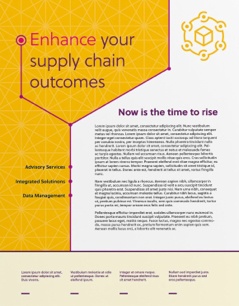 As the healthcare industry continues to shift from fee-for-service to value-based care, providers are under immense pressure to cut costs and streamline efficiencies. By improving outdated practices in supply chain and distribution management, supply chain leaders can accomplish both goals.
As the healthcare industry continues to shift from fee-for-service to value-based care, providers are under immense pressure to cut costs and streamline efficiencies. By improving outdated practices in supply chain and distribution management, supply chain leaders can accomplish both goals.
In an effort to minimize spending and improve the supply chain process, some health systems have chosen the self-distribution route by implementing consolidated service centers (CSCs) for centralized purchasing and distribution. A recent study found that while 26% of health systems are considering self-distribution, as many as 37% are already transitioning to the CSC model.
The number of operating CSCs has already doubled in recent years, with over 60 organizations utilizing the CSC model for their supply chain. While there are certainly benefits to managing your supply chain in-house, this approach does not necessarily fit the needs of all healthcare organizations.
Keep a few things in mind if you’re considering implementing a CSC to optimize your supply chain:
1. The size of the hospital matters.
There are many benefits in opening a CSC—but not necessarily for smaller hospitals and integrated delivery networks (IDNs). While large health systems are sure to reap financial and operational rewards, smaller hospitals typically lack the necessary volume and scale to see a return on their investment. That said, a small system could still benefit (in a big way) from revisiting and improving its supply chain strategy.
2. It should be a strategic initiative.
Strategy is the key word. In order for the CSC model to work effectively, it’s critical to put in place a sound strategy and implementation plan. Your strategy should address which supplies you would like to bring in-house. For example, medical/surgical supplies and pharmaceuticals are most commonly considered; however, other services such as printing, office supplies, and laundry can also be centralized. It’s also important to include the scope of the proposed project in your plan—what does it mean from a point-of-care perspective?
A C-Suite executive should be involved in developing this strategy; the executive will need to sponsor the project and assist with key decision-making. To ensure executive buy-in, supply chain leaders need to clearly communicate the value proposition—particularly the financial benefits.
3. Governance is challenging.
Part of your strategy should include governance, which can be particularly challenging for large, decentralized systems. If the health system doesn’t have centralized governance and allows each location to operate independently, the financial benefits of a CSC can be greatly reduced as operation costs rise. In order for the process to run optimally, all locations in an IDN must be integrated.
4. The initial investment is substantial.
The process and cost of opening a CSC can be daunting. While the long-term cost benefits are clear, initial capital still needs to be invested in the project. This includes the cost of either buying or building a warehouse, purchasing supplies in bulk, or warehouse management technology—whether it’s handled in-house or outsourced by a third party. By performing a detailed assessment, you will have a much better idea of whether or not a centralized approach is the right fit for your health system.
5. Technology makes it happen.
Even with the perfect plan in place and the budget to back it up, you’re still missing one key component: technology. If you’re planning to implement a CSC, you will need to acquire a warehouse management system to control the process. It’s important to note that typically, enterprise resource planning (ERP) systems cannot be used to manage a CSC.
If you’re considering the implementation of a consolidated service center as part of your overall supply chain strategy, we can help. Contact RiseNow for a free supply chain consultation to help point you in the right direction.





